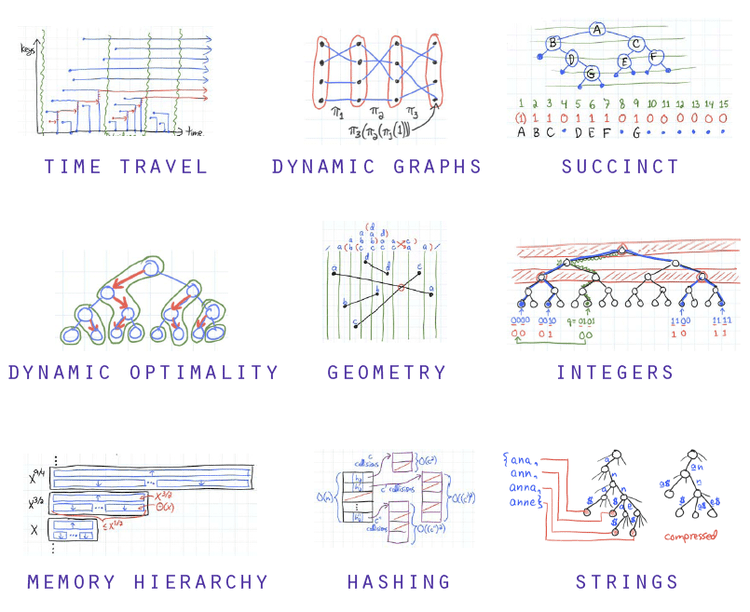 | ||
Chapter 1 introduction to data structure hindi
In computer science, a data structure is a particular way of organizing data in a computer so that it can be used efficiently.
Contents
- Chapter 1 introduction to data structure hindi
- Algorithms and data structures for interview preparation
- Usage
- Implementation
- Examples
- Language support
- References
Algorithms and data structures for interview preparation
Usage
Data structures can implement one or more particular abstract data types (ADT), which specify the operations that can be performed on a data structure and the computational complexity of those operations. In comparison, a data structure is a concrete implementation of the specification provided by an ADT.
Different kinds of data structures are suited to different kinds of applications, and some are highly specialized to specific tasks. For example, relational databases commonly use B-tree indexes for data retrieval, while compiler implementations usually use hash tables to look up identifiers.
Data structures provide a means to manage large amounts of data efficiently for uses such as large databases and internet indexing services. Usually, efficient data structures are key to designing efficient algorithms. Some formal design methods and programming languages emphasize data structures, rather than algorithms, as the key organizing factor in software design. Data structures can be used to organize the storage and retrieval of information stored in both main memory and secondary memory.
Implementation
Data structures are generally based on the ability of a computer to fetch and store data at any place in its memory, specified by a pointer—a bit string, representing a memory address, that can be itself stored in memory and manipulated by the program. Thus, the array and record data structures are based on computing the addresses of data items with arithmetic operations; while the linked data structures are based on storing addresses of data items within the structure itself. Many data structures use both principles, sometimes combined in non-trivial ways (as in XOR linking).
The implementation of a data structure usually requires writing a set of procedures that create and manipulate instances of that structure. The efficiency of a data structure cannot be analyzed separately from those operations. This observation motivates the theoretical concept of an abstract data type, a data structure that is defined indirectly by the operations that may be performed on it, and the mathematical properties of those operations (including their space and time cost).
Examples
There are numerous types of data structures, generally built upon simpler primitive data types:
Language support
Most assembly languages and some low-level languages, such as BCPL (Basic Combined Programming Language), lack built-in support for data structures. On the other hand, many high-level programming languages and some higher-level assembly languages, such as MASM, have special syntax or other built-in support for certain data structures, such as records and arrays. For example, the C (a direct descendant of BCPL) and Pascal languages support structs and records, respectively, in addition to vectors (one-dimensional arrays) and multi-dimensional arrays.
Most programming languages feature some sort of library mechanism that allows data structure implementations to be reused by different programs. Modern languages usually come with standard libraries that implement the most common data structures. Examples are the C++ Standard Template Library, the Java Collections Framework, and the Microsoft .NET Framework.
Modern languages also generally support modular programming, the separation between the interface of a library module and its implementation. Some provide opaque data types that allow clients to hide implementation details. Object-oriented programming languages, such as C++, Java, and Smalltalk, typically use classes for this purpose.
Many known data structures have concurrent versions which allow multiple computing threads to access a single concrete instance of a data structure simultaneously.
